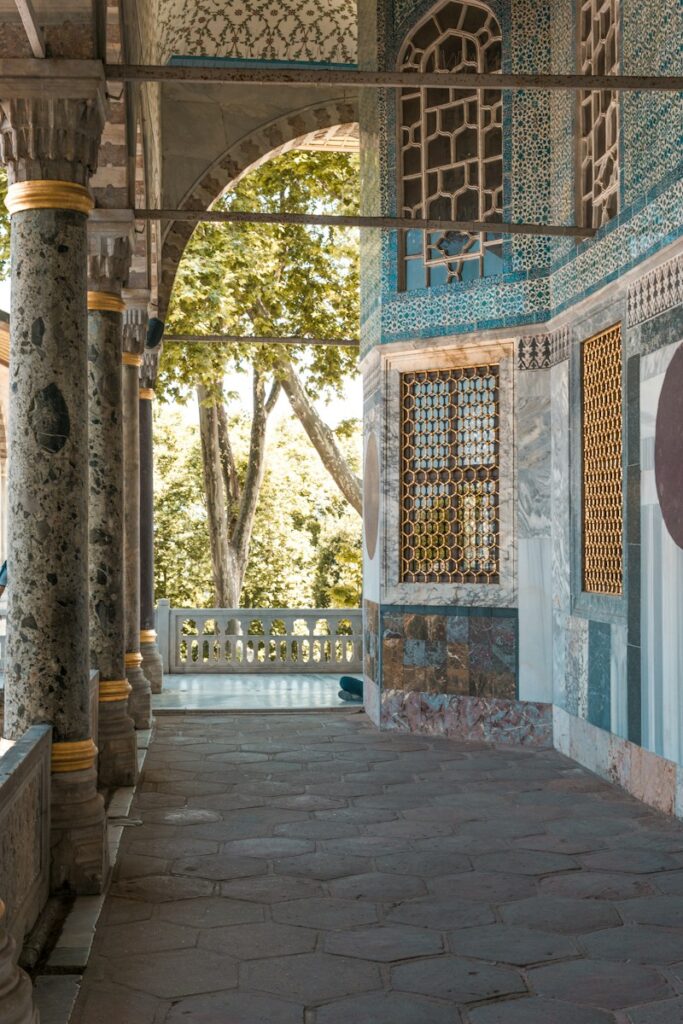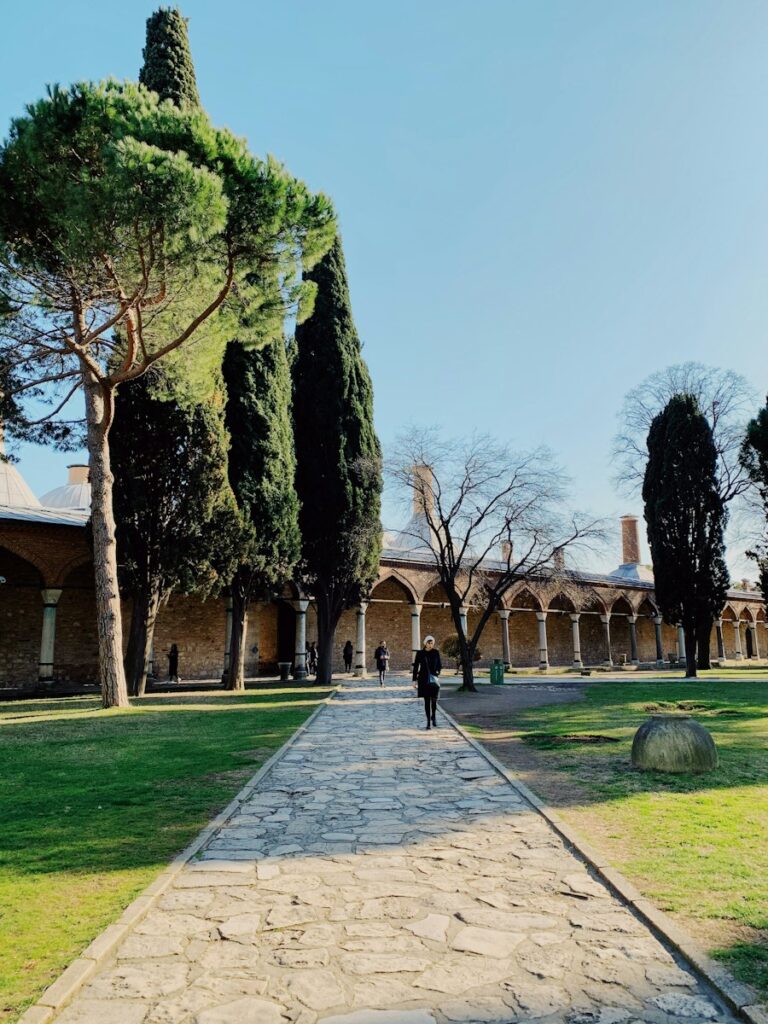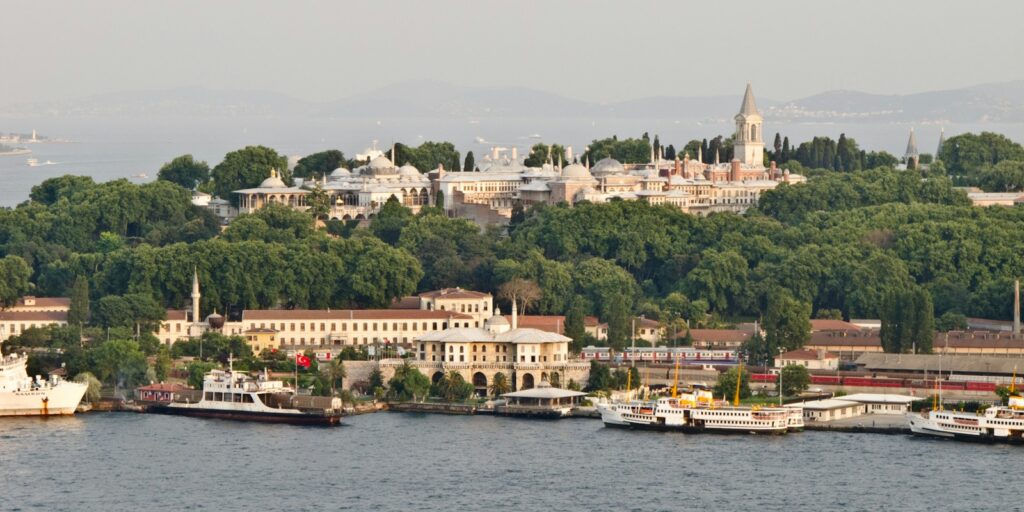Topkapi Palace, perched on the edge of Istanbul’s historic peninsula, offers a panoramic view that spans continents and centuries. As the heart of the Ottoman Empire for nearly 400 years, this palace is a testament to the empire’s strength, culture, and sophistication. Among its many sections, the Harem stands out, offering a unique lens through which to view the private lives of the sultans and their courts. This sprawling complex, with its lush gardens and opulent chambers, invites visitors to step back in time and explore the depths of Ottoman luxury and intrigue.
The palace’s architecture and artifacts paint a vivid picture of a bygone era, where power and beauty intertwined. The Harem, a secluded world within the palace, reveals the complexities of the Ottoman family life and the empire’s social structures. Visiting Topkapi Palace is not just about witnessing the grandeur of Ottoman architecture; it’s about immersing oneself in the stories and spirits that linger in its halls and courtyards.
Visiting Topkapi Palace: Practical Tips
Topkapi Palace is more than a historical site; it’s a journey into the heart of the Ottoman Empire. Located in the Sultanahmet district, it overlooks the confluence of the Bosphorus and the Marmara Sea, offering stunning views that are as captivating as the palace itself. The palace is open to visitors from 9 am to 6 pm, but it’s wise to verify the current opening hours, especially since it’s closed on Tuesdays. Admission is priced at 285 Turkish Lira, which includes access to the Palace, Harem, and Hagia Irene, providing a comprehensive experience of this magnificent site.
For those eager to delve deeper into the palace’s history, guided tours are available. These tours, led by knowledgeable guides, offer insights into the opulent lives of the sultans and the intricacies of court life. Whether you choose a focused tour of the Palace and Harem or a full-day exploration that includes other Sultanahmet landmarks, these guided experiences enrich your visit with historical context and fascinating anecdotes.

The Layout of Topkapi Palace
Navigating Topkapi Palace can be daunting due to its vast size and complex layout. The palace unfolds across four main courtyards, each leading to various buildings and gardens that served different purposes during the Ottoman era. The First Courtyard welcomes visitors with its grandeur, setting the stage for what lies ahead. As you move to the Second Courtyard, you encounter the heart of the palace’s administrative and ceremonial life, including the Imperial Council Hall and the palace kitchens.
The Harem, accessible through the Second Courtyard, is a highlight of the visit. This secluded complex, once home to the sultan’s family and concubines, is a maze of beautifully decorated rooms and private chambers. Beyond the Harem, the Third and Fourth Courtyards offer a more intimate glimpse into the sultan’s personal life, with the Audience Chamber and the Pavilion of the Holy Mantle showcasing the empire’s religious relics. Spending at least half a day here allows you to appreciate the palace’s architectural beauty and historical significance fully.
The Enigmatic World of the Harem
The Harem is perhaps the most intriguing part of Topkapi Palace, offering a glimpse into the private lives of the Ottoman elite. This section of the palace was strictly regulated, housing the sultan’s family, concubines, and eunuchs who served them. The architecture and decorations within the Harem are breathtaking, with intricate tile work, lush courtyards, and opulent living quarters that reflect the wealth and power of the Ottoman sultans.
Exploring the Harem, you’ll discover the Courtyard of the Black Eunuchs, which served as the administrative heart of this secluded world. The Imperial Hall, another must-see, was used for official receptions and showcases the luxurious lifestyle of the sultans. Each room and courtyard within the Harem tells a story of love, power, and intrigue, making it a fascinating part of the palace to explore.
The Harem’s Notable Areas
Within the labyrinthine layout of the Harem, certain areas stand out for their historical significance and beauty. The Courtyard of the Black Eunuchs, with its stunning tile work, offers insights into the lives of the eunuchs who played a crucial role in the daily operations of the Harem. The Imperial Hall, the grandest room in the Harem, was where the sultan entertained guests and held official functions, adorned with lavish furnishings and decorations that underscore the opulence of the Ottoman court.
The Apartments of the Crown Prince, often referred to as the “Golden Cage,” highlight the paradox of luxury and imprisonment experienced by potential heirs to the throne. These rooms, considered among the most beautiful in the Harem, were luxurious yet served as a gilded prison for princes who posed a threat to the reigning sultan. The intricate designs and luxurious appointments of these areas underscore the complex interplay of power and beauty that characterized the Ottoman Empire.

The Legacy of the Harem
The Harem was not just a residence but a pivotal center of power within the Ottoman Empire. It was here that the sultan’s mother, the Valide Sultan, and his favorite concubines exerted their influence, shaping the politics and culture of the empire. The social hierarchy and daily life within the Harem reflect the broader complexities of Ottoman society, where tradition and ambition collided.
The stories of those who lived within the Harem walls, from powerful sultans to influential concubines, offer a fascinating glimpse into the personal and political dynamics of the empire. The Harem’s legacy is a testament to the Ottoman Empire’s richness and depth, providing a window into a world where power, beauty, and intrigue were intertwined.
Conclusion
Visiting Topkapi Palace and its Harem is an immersive experience that transports you to the heart of the Ottoman Empire. The palace’s stunning architecture, combined with the captivating stories of its inhabitants, offers a unique glimpse into a bygone era of opulence and power. What I found most compelling about the visit was the Harem, with its intricate beauty and complex history. It’s a reminder of the human stories behind the empire’s grandeur, making Topkapi Palace a must-visit for anyone interested in history, architecture, or simply the allure of discovering the secrets of the past.








